Results
-
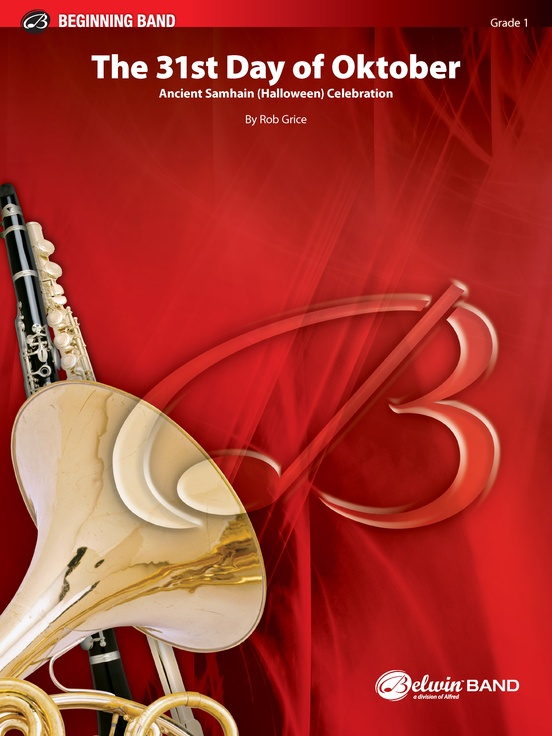 £53.95
£53.95The 31st Day of Oktober - Rob Grice
Capture the imagination of your young musicians with this scary musical escapade, , by Rob Grice. Well within the abilities of beginning musicians, this dark comical work brings images of Halloween to life! Your students will ask to play this year-round. It's that much fun.Halloween originated 2000 years ago with the ancient Celtic festival of Samhain (Sow-in), when people would light bonfires and wear costumes to ward off ghosts. This imaginative and scary selection is written to bring out the best in younger music students and will impress the audience with their mature sound. A sure thing for your fall concert. (2:20)
Estimated dispatch 3-5 working days
-
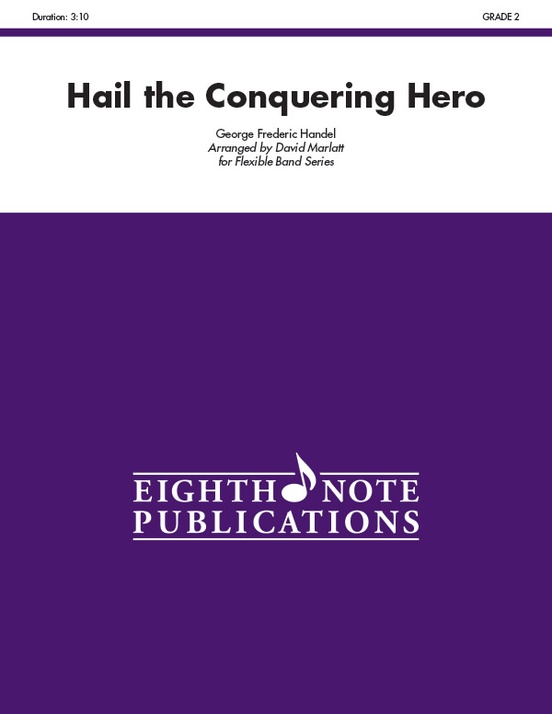 £50.50
£50.50Hail the Conquering Hero - George Frederic Handel / arr. David Marlatt
provides ultimate flexibility for ensembles with incomplete instrumentation or odd combinations. These pieces are playable by as few as 5 woodwind, brass or string players with or without percussion. This creates the opportunity for a mixed quintet to perform these titles but also allows for performance for 10-15 players up to full a band/orchestra with parts doubling. Great for music camps, contest use or any band room that has non-standard instrumentation. This is one of Handel's best known melodies. This version of the famous Hail the Conquering Hero opens with a solo, gradually adds voices and builds in dynamic, then the sound drops to a duet which starts the building again. Everyone gets a section of melody making it interesting for all. (3:10)
Estimated dispatch 3-5 working days
-
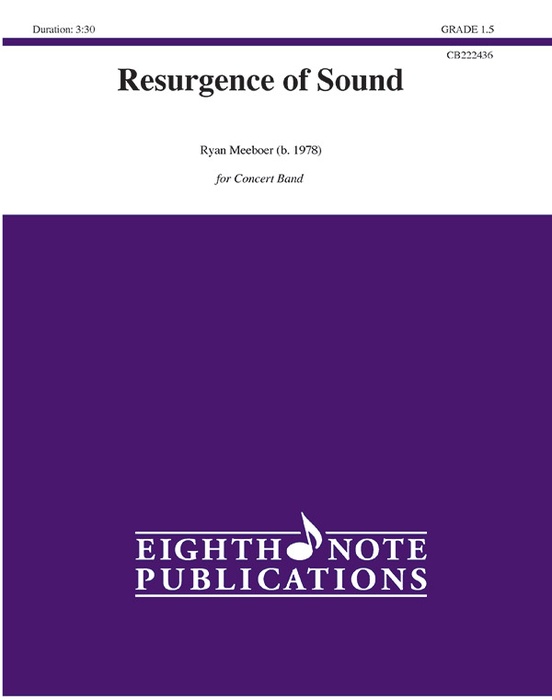 £53.95
£53.95Resurgence of Sound - Ryan Meeboer
was composed by Ryan Meeboer to celebrate the perseverance of instrumental music education during the COVID-19 pandemic. This piece provides ample opportunity to work on several musical elements, such as articulations, syncopated patterns, balance, tone, dynamic, and rhythmic shifts---all while performing fun, uplifting, and dramatic melodic material. Every instrument is given the opportunity to perform the melody at some point, making it exciting for all musicians to play. The piece was composed for a band at the Grade 1.5 level, but includes advanced parts for the flute, clarinet, alto sax, trumpet, horn, and trombone/baritone. These parts add range, technique, and control that is at the Grade 3 level. This offers the opportunity for more advanced players to play these parts with more flourishes while the majority of the band can play at a Grade 1.5 level.
Estimated dispatch 3-5 working days
-
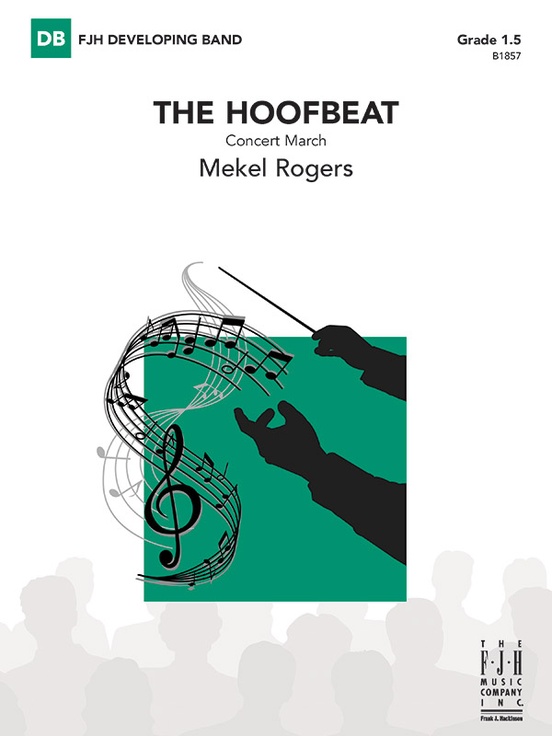 £53.95
£53.95The Hoofbeat - Mekel Rogers
Composed in the style of a traditional circus march, this exciting work lets younger bands really open up the throttle and have some fun! Wind parts have very comfortable ranges and careful scoring makes even a small band sound big. Really clever and engaging music for younger players!
Estimated dispatch 3-5 working days
-
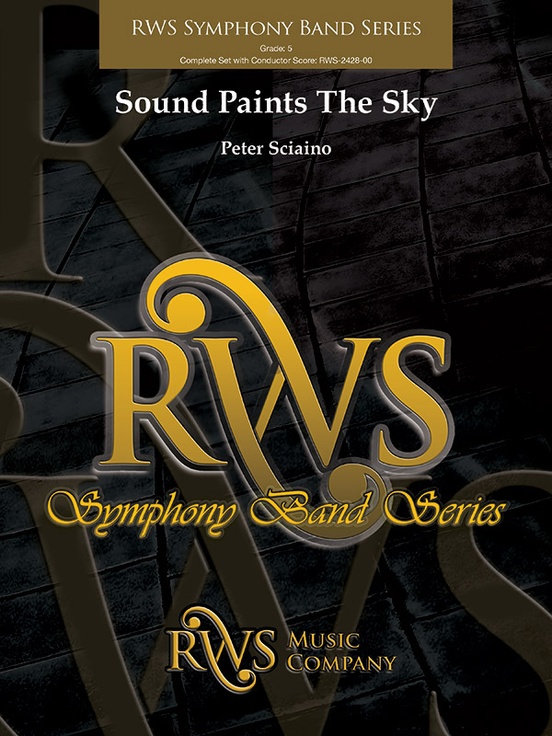 £138.00
£138.00Sound Paints the Sky - Peter Sciaino
This powerful and dynamic work for advanced bands is inspired by the power of community. by Peter Sciaino pays tribute to the talented musicians and passionate artists who have paved a path for wind bands around the world to succeed and touch our lives with the vivid and glorious colors of music. Spectacular! (6:30)
Estimated dispatch 3-5 working days
-
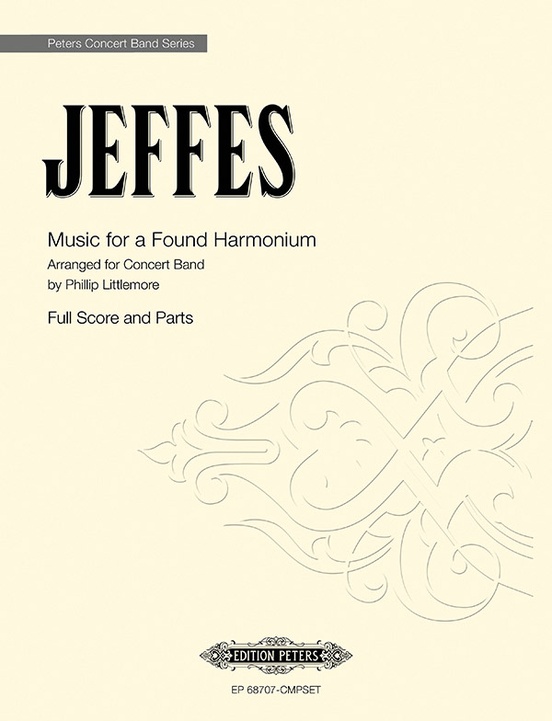 £123.00
£123.00Music for a Found Harmonium - Simon Jeffes / arr. Phillip Littlemore
The Penguin Caf Orchestra, founded by Simon Jeffes, created an instantly recognizable sound world, beautifully crafted to convey simple wonder and joy. Phillip Littlemore's arrangement for concert band of their famous perfectly captures the exuberance of this uplifting music. (2:30) Original Item: EP68707-CMPST
Estimated dispatch 3-5 working days
-
£39.95
Keep the Faith - Score and Parts - Duncan Stubbs
Program NotesKeep the Faith originally started as a personal tribute to my late mother. Not long after writing the opening ideas I was approached to write music to accompany a rendition of the poem "We Will Keep the Faith" by Moina Michael for performance as part of the 100th Anniversary of the start og World War I. The appropriateness of the music already written and the sentiment behind both concepts was a coincidence too good to overlook. Rarely sentimental and always practical I feel sure my mum would be delighted that the music she originally inspired was being used to portray a much wider universal message of remembrance.Whether performed with or without the poem a fully sustained sound should always be aimed for. The 'bugle' call at bar 20 and again at bar 76 should reflect a distant call across the trenches, the cornet remaining prominent over the upper woodwind. The tempo indication is a guide only and allowance must be made for the acoustic in which the piece is performed. The music must always flow, but appropriate rubato should be freely used together with appropriate tenuto in the middle of phrases.- Duncan Stubbs
Estimated dispatch 7-14 working days
-
£7.95
Keep the Faith - Score only - Duncan Stubbs
Program NotesKeep the Faith originally started as a personal tribute to my late mother. Not long after writing the opening ideas I was approached to write music to accompany a rendition of the poem "We Will Keep the Faith" by Moina Michael for performance as part of the 100th Anniversary of the start og World War I. The appropriateness of the music already written and the sentiment behind both concepts was a coincidence too good to overlook. Rarely sentimental and always practical I feel sure my mum would be delighted that the music she originally inspired was being used to portray a much wider universal message of remembrance.Whether performed with or without the poem a fully sustained sound should always be aimed for. The 'bugle' call at bar 20 and again at bar 76 should reflect a distant call across the trenches, the cornet remaining prominent over the upper woodwind. The tempo indication is a guide only and allowance must be made for the acoustic in which the piece is performed. The music must always flow, but appropriate rubato should be freely used together with appropriate tenuto in the middle of phrases.- Duncan Stubbs
Estimated dispatch 7-14 working days
-
 £72.99
£72.99Wind Power - Robert Buckley
In this impressive piece, the title Wind Power can refer either to the various machines that are driven by the wind, or the soaring sound of a wind band. In a cinematic style, this work opens powerfully with a series of tone clusters followed by a constantly moving series of notes depicting the ebb and flow of the wind. Then we are soaring high above the ground in a glider with only the sound of the wind keeping us aloft. With dramatic shifts in dynamics along with pulsing rhythms, this piece is a fun challenge for all members of the ensemble. Dur: ca. 5:00
Estimated dispatch 7-14 working days
-
 £110.00
£110.00Mount Everest - Kees Vlak
This composition basically consists of three fragments and an epilogue (conclusion):1) Plateaux, 2) Sherpas, 3) Climb. The piece starts with a musical depiction of the deserted plateauxs and mountain peaks of the Himalayas. The mysteriousness of theTibetan country was caused by its inaccessibility to other nations. One even believed that there was a paradise behind the huge mountains; the land of Shangra La. 1) After the sound of a gong, the Asian-like theme arises extremely softly from thedecay of the percussion. In bars 4 and 5 the syllables of Hi-ma-la-ya echo. Then a second theme appears; it symbolises the enchantment of the mountaineers by seeing the Mount Everest. 2) Eastern percussion, very evenly without emotion, sound from thedeserted village of the sherpas. The phrasing is prescribed by the number 'three'. From measure 56 Tibetian monks sing a chant, also with the religious background of the number 'three'. 3) The third part starts of with the sight of the giant MountEverest with an entirely new theme, that is played impressively by the strong low brass instruments of the band, immediately followed by the excited big climbing. The many surprises are depicted by the changing time signatures. Two themes are inconstant battle; the binary Himalaya theme and the ternary Mount Everest theme. Only once there is a steely composure. The registers in which the piece is played increase. The tension rises...Then the peak is reached. A long pause follows before onerealises that one is on top of the world. Slowly the emotions of joy grow and lead to an enormous climax. The first enchanted theme sounds again in total glory.
Estimated dispatch 7-14 working days
